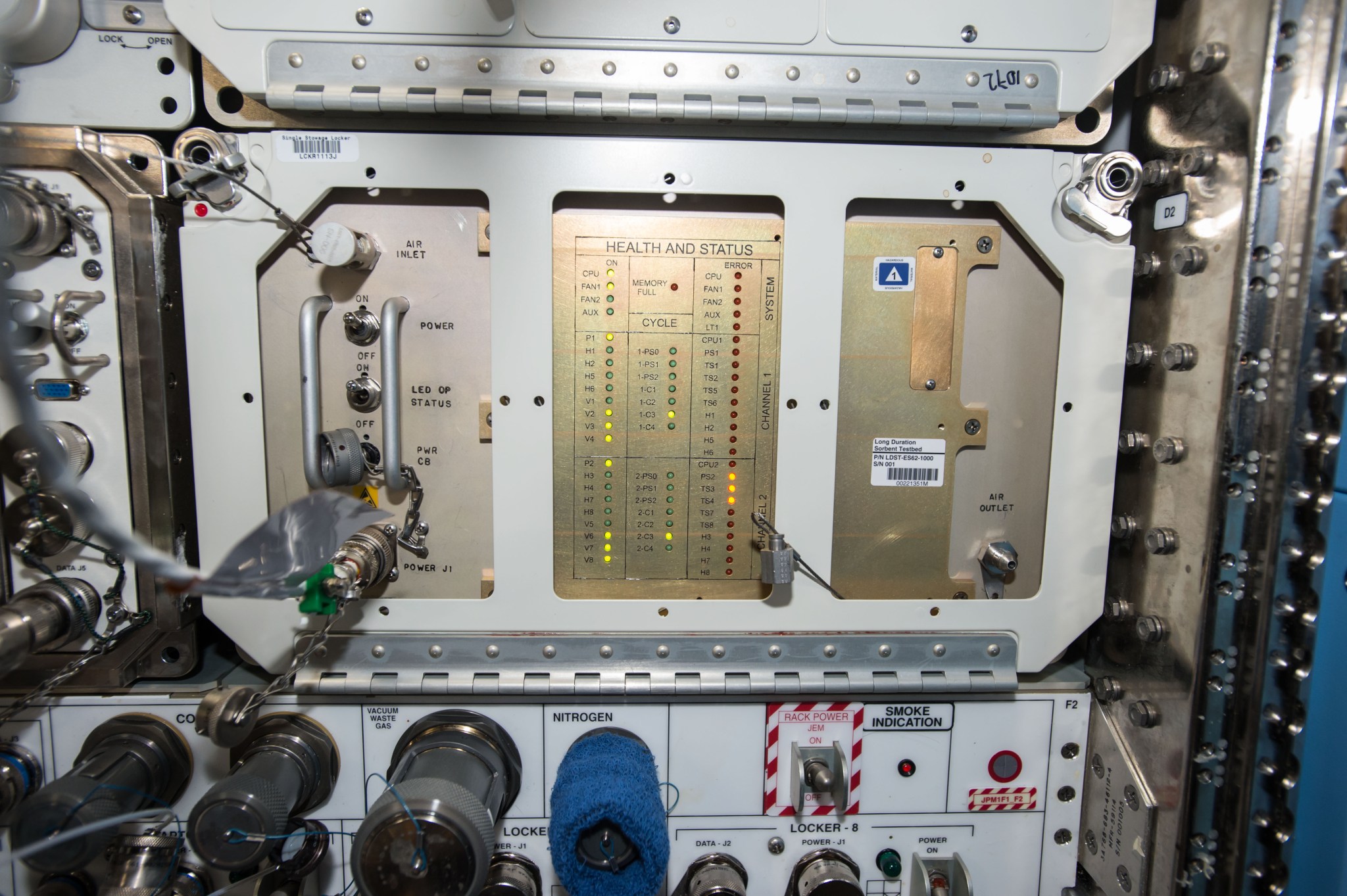In This Week’s Star
- NASA Officials Celebrate Alabama’s Role in the Journey to Mars, Promote STEM Education
- Marshall Scientists Searching for a Better Way to ‘Scrub’ Space Station Air
- Redstone Garrison Commander Holliday Tours Marshall Facilities
- Redstone Arsenal Issues New Reveille/Retreat Guidance for Drivers
- This Week in NASA History: First Crew Rotation Mission Launches to International Space Station — March 8, 2001
- Obituaries
NASA Officials Celebrate Alabama’s Role in the Journey to Mars, Promote STEM Education
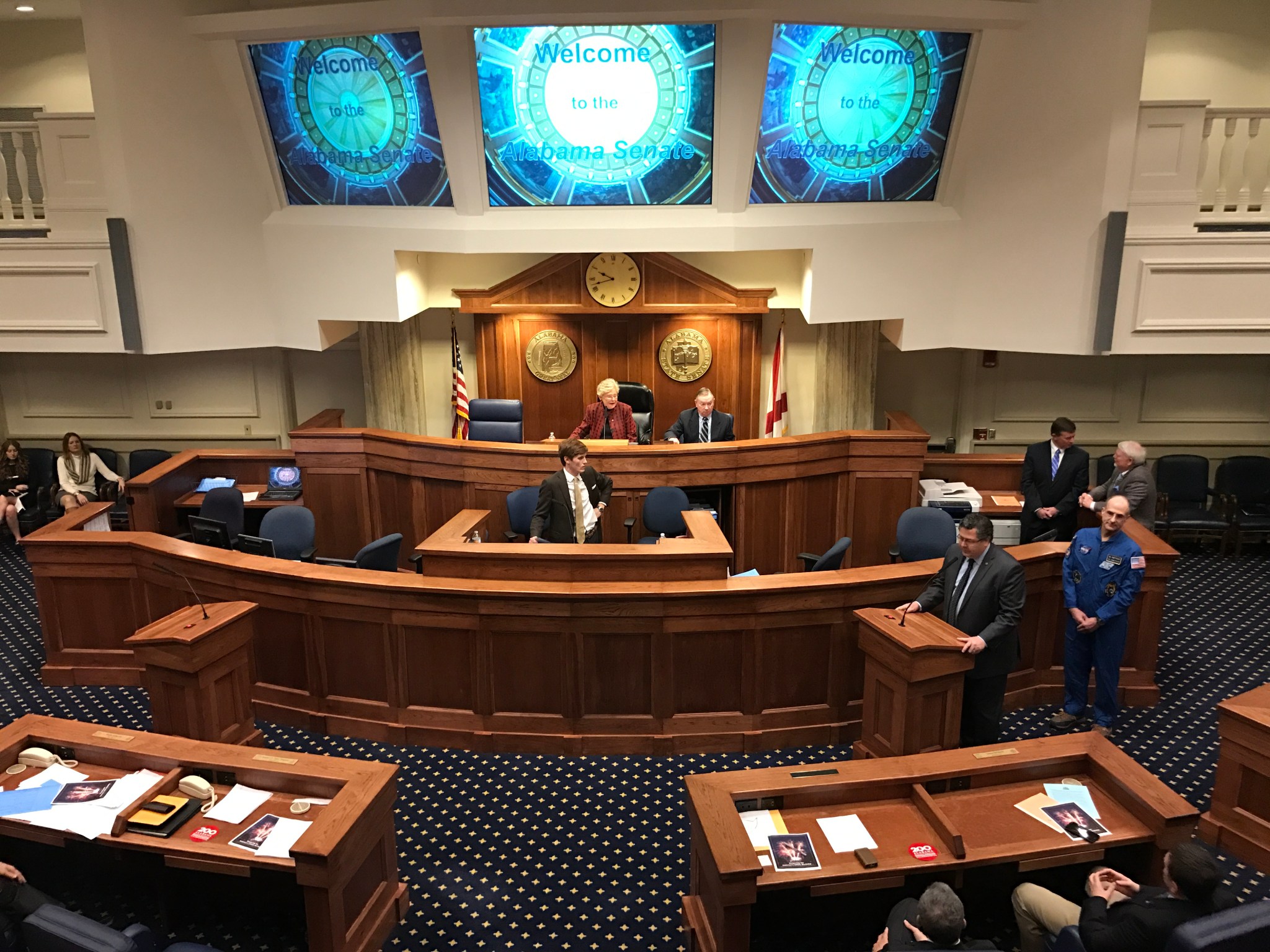
NASA Marshall Space Flight Center Director Todd May and NASA astronaut Don Pettit address members of the Alabama Senate March 2 during “NASA Day in Montgomery.” May, Pettit and other Marshall officials met with lawmakers throughout the day, celebrating the state’s contributions to space exploration. The annual event, lauded by many lawmakers as one of their favorite days of the year, featured interactive displays and other exhibits aimed at engaging students in in the STEM fields of science, technology, engineering and math. (NASA/MSFC/Brian C. Massey)
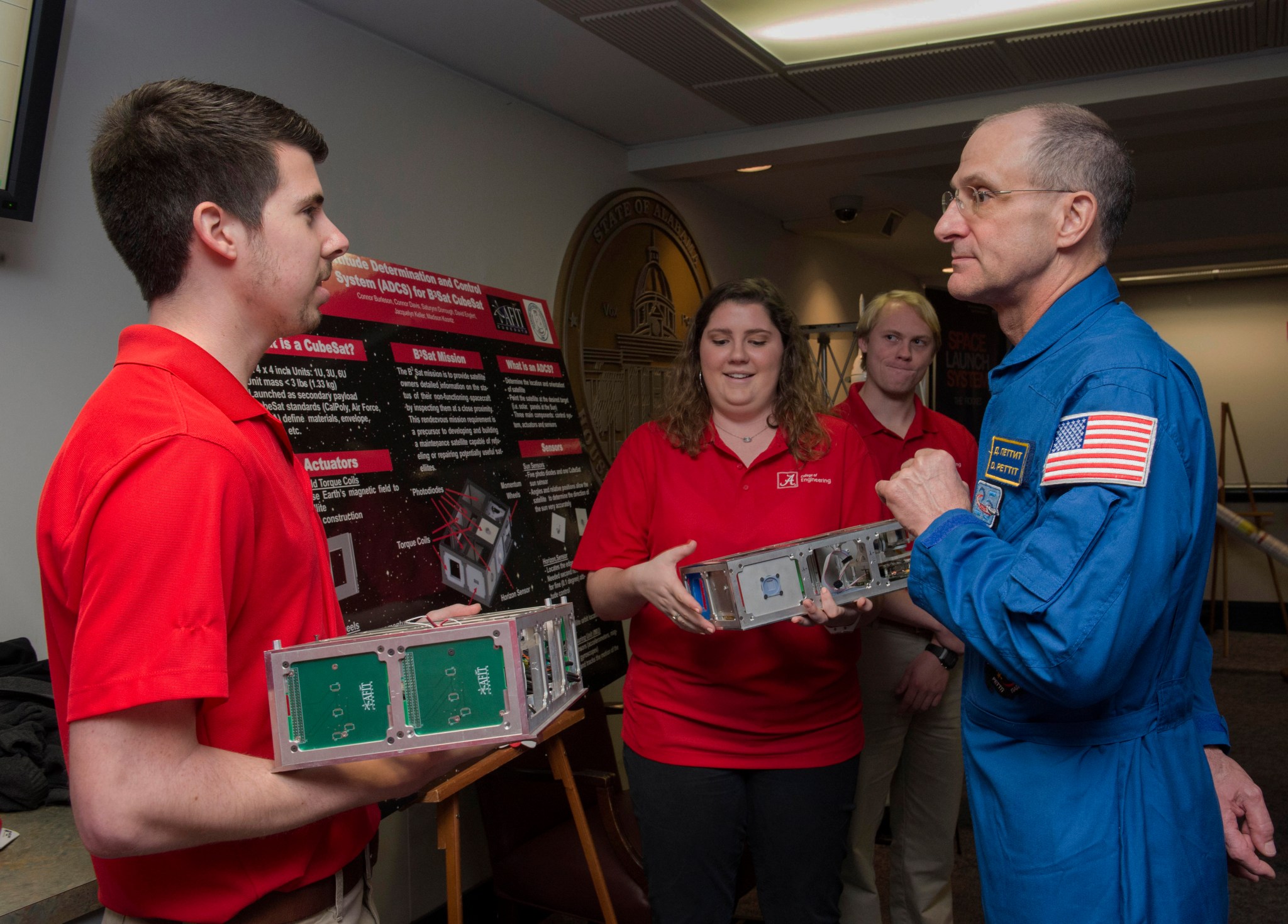
NASA astronaut Don Pettit, right, a veteran of three spaceflights, discusses CubeSat technology with University of Alabama in Tuscaloosa students, from left, David Englert, Madison Koontz and Connor Burleson. The students, members of the Built by Bama CubeSat Attitude Determination and Control team, presented their work during NASA Day in Montgomery at the Alabama State House March 2. The attitude determination and control system is responsible for providing control to maintain desired orientation and determining the current attitude of the satellite, which will be launched from the International Space Station. (NASA/MSFC/Emmett Given)
Marshall Scientists Searching for a Better Way to ‘Scrub’ Space Station Air
By Bill Hubscher
Crew members on the International Space Station work on dozens of science investigations every week, including one that could change the way we keep astronauts safe during spaceflight.
On March 3, NASA astronaut Shane Kimbrough worked on the filters for the Long Duration Sorbent Testbed, which is managed at NASA’s Marshall Space Flight Center. Scientists are using the testbed to create a more efficient life support system for long-duration, crewed space missions.
The air filters on the space station currently use a silica gel to remove water from the air, which allows the life-support hardware to more efficiently remove carbon dioxide. The carbon dioxide is processed with waste hydrogen to convert the two products into water, a precious commodity in space.
After a year, silica gel loses up to 75 percent of its capacity to absorb water, making it necessary to replace it frequently. The Long Duration Sorbent Testbed is studying 12 potential replacements for the gel to determine which would be most effective for use on longer missions. Data from the study will help determine the best material to use to build better filters, which would reduce the number of replacements needed on deep-space missions, leaving more mass for other payloads. Ground crews will conduct a similar experiment in a laboratory on Earth using the same materials for comparison.
Hubscher, an ASRC Federal/Analytical Services employee, supports the Office of Communications.
Redstone Garrison Commander Holliday Tours Marshall Facilities
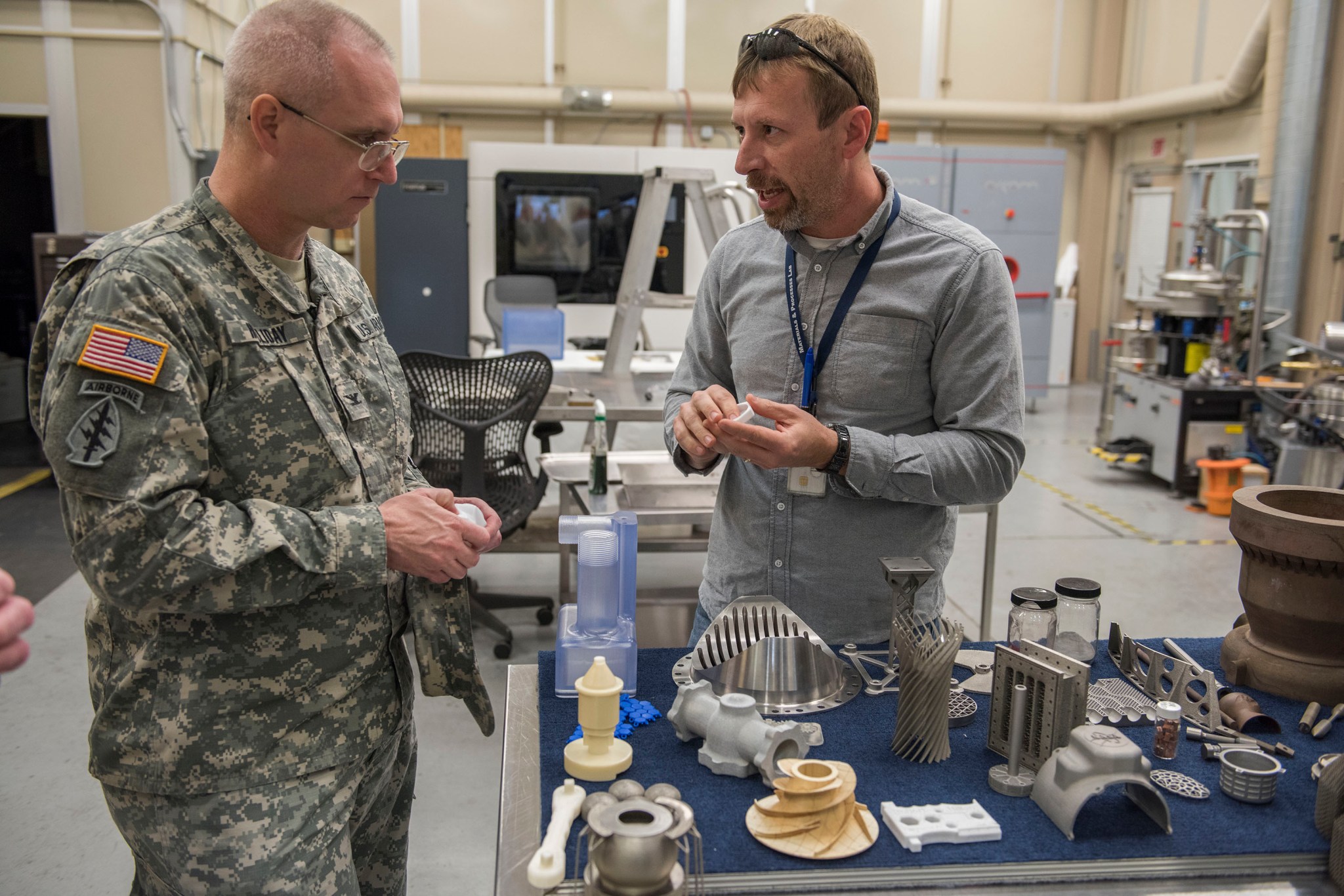
Redstone Arsenal Garrison Commander Col. Thomas “Doc” Holliday, left, discusses the processes and hardware used in NASA in-space manufacturing techniques with Ken Cooper, a structural materials engineer at NASA’s Marshall Space Flight Center. Cooper, part of the Marshall Engineering Directorate’s Advanced Manufacturing and Digital Solutions team, was among numerous subject-matter experts who shared key Marshall capabilities during Holliday’s March 3 Marshall tour. Holliday, a decorated officer whose military career began in 1992, gained firsthand insight into Marshall’s advanced manufacturing and 3-D printing techniques; round-the-clock International Space Station science and communications support by the Payload Operations Integration Center team; and the latest upgrades to Marshall test stands in support of next-generation launch vehicle and flight hardware development. Marshall, a Redstone Arsenal tenant, routinely shares cutting-edge research and manufacturing advances with its military and federal agency counterparts, working in partnership to advance NASA’s mission and maintain the nation’s technological leadership. (NASA/MSFC/Fred Deaton)
Redstone Arsenal Issues New Reveille/Retreat Guidance for Drivers
Beginning March 13, all inbound gate traffic on Redstone Arsenal, as well as vehicles at two major intersections within the installation, are expected to stop during weekday observances of Reveille and Retreat — the traditional military bugle calls to be broadcast via outdoor speakers.
Security personnel at all Redstone gates will halt traffic in inbound lanes for 19 seconds at 6:30 a.m. during Reveille, and for 60 seconds at 5 p.m. during Retreat. Outbound traffic will not be affected. Traffic also will be stopped at the intersections of Goss and Vincent roads and Patton and Aerobee roads for the same duration.
All persons driving on Redstone Arsenal are asked to observe the tradition in a safe manner. Drivers are not expected to exit their vehicles during observance of the morning and evening broadcasts, but Marshall team members are reminded that, based on military tradition, some individuals may pull off the road and step out of their vehicles on other roads and arsenal locations in addition to the designated intersections.
Daily Reveille and Retreat ceremonies, including the raising and lowering of the U.S. flag, will be conducted by Army personnel in front of the Army Materiel Command Headquarters at 4400 Martin Road. There will be no ceremonies on holidays or weekends.
Reveille, derived from the French term for “wake up,” was a traditional bugle call used to wake military personnel at sunrise, while Retreat historically signaled the end of the military working day at sunset. Both traditions are thought to date back to the 1800s.
This Week in NASA History: First Crew Rotation Mission Launches to International Space Station — March 8, 2001
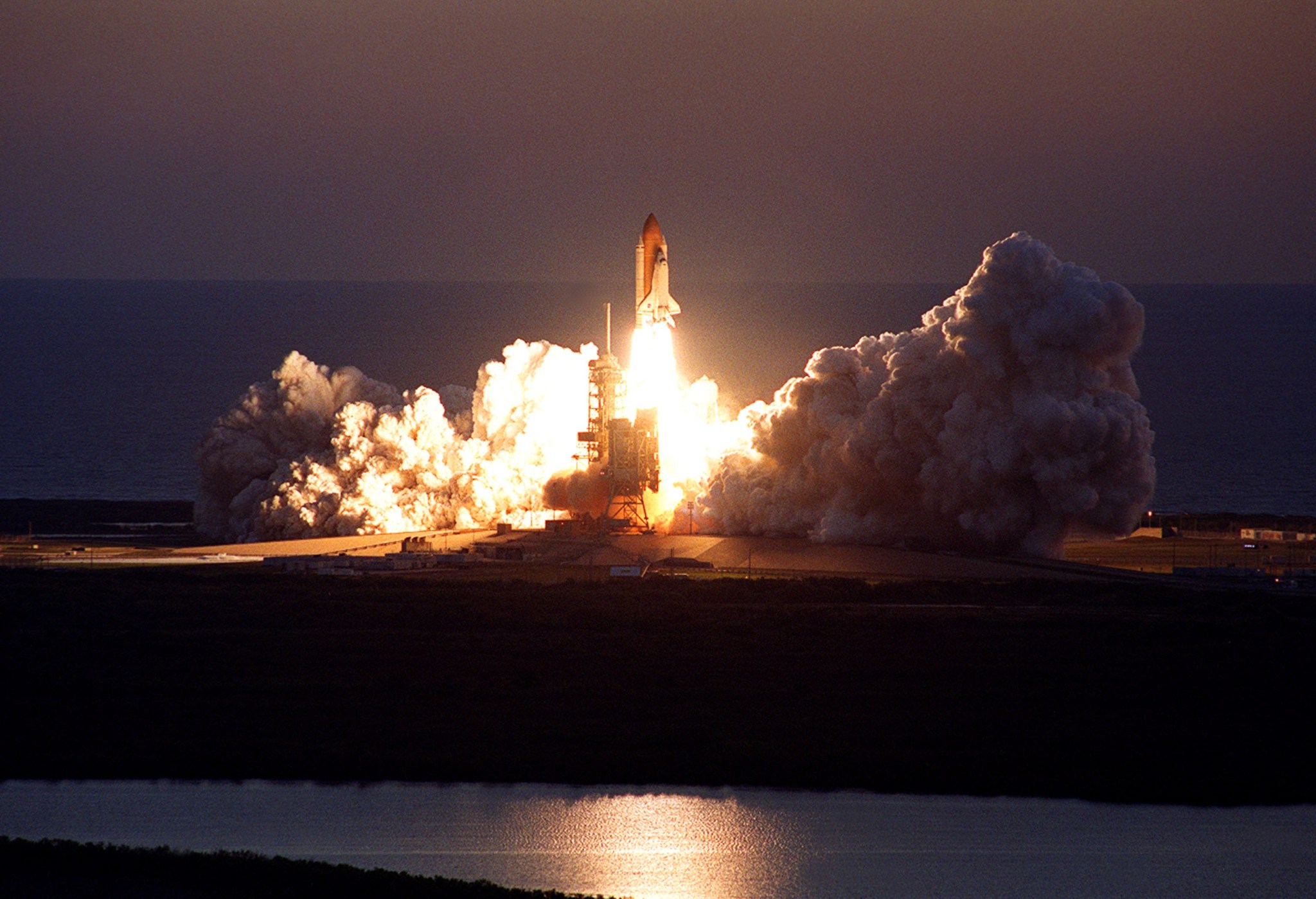
This week in 2001, space shuttle Discovery and STS-102 launched the second resident crew, Expedition 2, to the International Space Station. STS-102 also delivered the first Multi-Purpose Logistics Module, Leonardo, full of supplies and equipment for the U.S. Laboratory Destiny. Discovery returned to Earth March 21, 2001 with the Expedition 1 crew. The first shuttle mission launched in April 1981, and for the next 30 years the program’s five spacecraft carried people into orbit repeatedly, launched, recovered and repaired satellites, conducted cutting-edge research and built the largest structure in space, the space station. Today, Marshall’s Payload Operations Integration Center serves as “science central” for the space station, working 24/7, 365 days a year in support of the orbiting laboratory’s scientific experiments. The NASA History Program is responsible for generating, disseminating, and preserving NASA’s remarkable history and providing a comprehensive understanding of the institutional, cultural, social, political, economic, technological, and scientific aspects of NASA’s activities in aeronautics and space. For more pictures like this one and to connect to NASA’s history, visit the Marshall History Program’s webpage. (NASA)
Obituaries
Thomas J. Williams, 64, of Arab, Alabama, died Feb. 27. He retired from the Marshall Center in 2008 as a supervisory procurement analyst. He is survived by his wife, Doris C. Williams.
James E. Hopkins, 88, of Huntsville, died Feb. 28. He retired from the Marshall Center in 1983 as a welder.
Osceola Cloud, 87, of Huntsville, died March 5. He retired from the Marshall Center in 1987 as an electrical technician.



























